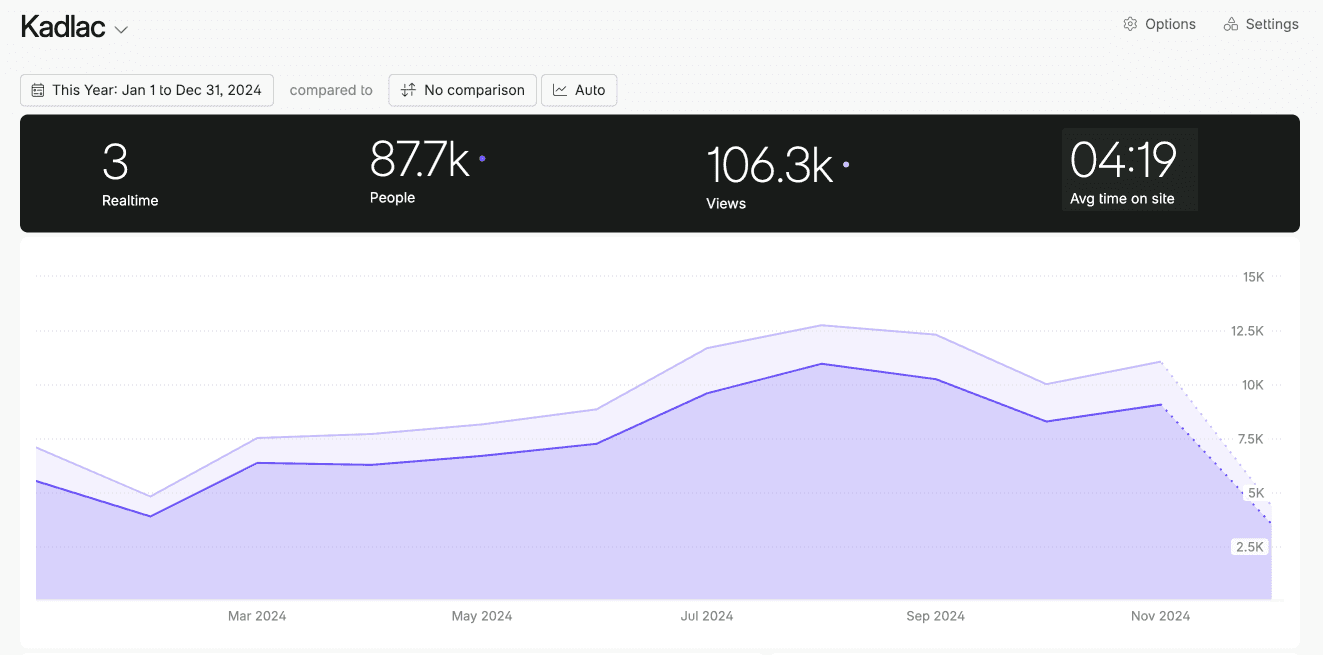How to break the sleep code by resting your head on a soft bag of buckwheat
Oct 24, 2022

Getting a good night's sleep is like winning an epic battle.
Once you experience it, replicating victories are like trying to code-break Enigma, the Nazi's encryption device during WWII. If we crack the code, we protect this highly sensitive secret for as long as possible.
Why? The next eight hours depends on it.
And when you lose this secret sleep code—as well all do—you start to grasp for new levers: the time you go to bed, the thread count of your sheets, the sound of your white noise fan, the temperature of your room, your sleep monitoring device, or that new glow lamp that gently brightens the room at 6 AM.
Even if you push and pull the levers into the right order, once you put head-to-pillow, the fate of the next eight hours is mostly up to your sleep position.
And most people get it wrong. Instead of feathers, a small seed known as buckwheat is the secret to a supportive night's sleep.
What is a Buckwheat Pillow?
A buckwheat pillow is a type of pillow filled with hulls from the buckwheat plant. These hulls, the outer shells of the buckwheat grain, are renowned for their unique properties, making them an ideal filling material for pillows. Known as “sobakawa” or “Japanese pillows” in Japan, buckwheat pillows have been used for centuries. They are celebrated for their ability to provide firm support and maintain their shape, making them an excellent choice for people who suffer from neck pain or prefer a more supportive pillow. Unlike traditional pillows that can flatten or lose their shape over time, buckwheat pillows offer consistent support, ensuring a restful sleep night after night.
The seed that helps you fall asleep better

A pillow is rather straightforward. If you can stuff something in a pillowcase, you can call it a pillow. Technically, you could make a pillow out of shredded sneakers, but most are stuffed with down, feather, polyester fiberfill, shredded memory foam, shredded latex, wool, kapok, or any other synthetic material you can imagine.
Buckwheat is a unique little seed. It takes hundreds of buckwheat hulls to fill a pillow, often referred to as buckwheat hull fill. It’s the opposite of a down feather, which you might find in an elegant hotel. Imagine a photo of a gentle, fluffy down feather compared to a small, hard shell-like seed, and I expect nothing less than an exaggerated eye-roll.
Even more confusing, buckwheat isn’t even a type of wheat. It’s a fruit seed, one of the world’s first domesticated crops, and originated in Southeast Asia more than five thousand years ago.
The seed isn’t what’s used in a buckwheat pillow. It’s the outer casing; the husk, or hull. And a single buckwheat husk is small, smooth, and triangular in shape. Its shape is cupped with thousands of tiny air pockets between them, great for airflow, support, and cooler sleep.
Because buckwheat husks are hard and durable and replaceable, the best buckwheat pillow can last up to ten years with care.
How Buckwheat Pillows Work
Buckwheat pillows work by conforming to the shape of your head and neck, providing unparalleled support and maintaining proper spinal alignment. The buckwheat hulls inside the pillow shift and adjust to your unique contours, allowing for a customized fit that traditional pillows simply can’t match. This adaptability makes buckwheat pillows an excellent choice for those who suffer from neck pain or have trouble sleeping due to discomfort. Additionally, the breathable nature of the buckwheat hulls allows for excellent airflow, helping to regulate body temperature. This makes buckwheat pillows particularly beneficial for hot sleepers who struggle to stay cool throughout the night.
It’s like a bean bag for your head—and it’s really comfortable
Buckwheat hull pillows work by conforming to the shape of your head and neck, providing unparalleled support and maintaining proper spinal alignment.
In a 1986 study observing sleep positions, eleven subjects were monitored, changing positions on average 13 times. They also averaged 299 leg kicks.
Leg kicks!
Many of the kicks occurred before and after the body changes position, leading them to hypothesize that it was due to small torsions of the spine and back. Simply, your body needs to relieve the stress from your spine and the only way it knows how is to kick, forcing a change of position.

What’s different about the organic buckwheat pillow? It’s designed to hold your head and spine in a supportive position for as long as possible. The husks nestle in around your head and neck area—like a bean bag—giving you much more support than feathers are capable of.
When the pillow is properly customized for your body position, you don’t need to ‘kick’ as much. In the same way that you need correct posture when sitting upright, your spine needs the same support when lying flat.
Materials and Construction
Buckwheat pillows are typically crafted from a combination of natural materials, including organic buckwheat hulls and an organic cotton cover. The hulls are meticulously selected and cleaned to ensure they are free from debris and allergens, providing a pure and safe sleeping experience. The cotton cover, often made from high-quality, organic cotton, is breathable and soft to the touch, enhancing the overall comfort of the pillow. While some buckwheat pillows may feature additional materials, such as a layer of foam or a special type of fabric, the core filling remains the buckwheat hulls, which are the heart of the pillow’s supportive and cooling properties.
Sleep more with less
Wabi-sabi is a Japanese aesthetic. It embodies asymmetry, imperfection, and authenticity to its core premise for being.
In contrast, the pride of the West is excess. Large SUV’s mask our insecurities, massive 64oz containers let us endlessly slurp soda without fear of finishing, and overconsumption has left many of us overweight.
Here in the West, most pillows market themselves on their aesthetic beauty, their perfect symmetry, and their monstrous fluffy size. The bigger the better. Rooms are filled with pillows, manipulating our minds with ideas that more equals comfort.
The Japanese buckwheat pillow is the antithesis of this entire concept. Its construction is built on the idea that just enough is necessary. The hulls themselves are imperfect, but they work together in harmony to provide the support your body needs. The pillows are small in size, only needing to cup your head and neck.
Nothing more; nothing less. Wabi-sabi. This minimalist approach helps you fall asleep faster and enjoy a more restful night.
The benefits of a buckwheat pillow for neck pain
Unlike fillers such as feathers or synthetics, the best buckwheat pillows offer much more support due to the fact that the buckwheat hulls are naturally harder and able to adapt to your head, spine, and shoulders.
Because the husks are shell-like, they don't absorb heat like most materials, and you'll find that if you run hot, this pillow won't.
Buckwheat is also considered a hypoallergenic which helps keep those allergies at bay.
If you're like me, you don't like to think about investing in your sheets, comforter, or pillows unless you're forced to. But, this pillow can last you 10 years if you take care of it. In other words, keep it dry.
Choosing the Right Buckwheat Pillow
Choosing the right buckwheat pillow can feel overwhelming, especially if you’re new to this type of pillow. Here are a few tips to help you make the best choice:
Look for a pillow made with high-quality, organic buckwheat hulls and an organic cotton cover. These materials ensure durability and comfort.
Consider the size of the pillow. While standard size buckwheat pillows are typically 20” x 26”, some manufacturers offer larger or smaller sizes to suit different preferences.
Think about the level of support you need. Buckwheat pillows can be adjusted to provide more or less support, but some people may prefer a pillow with a bit more loft.
Check reviews and ratings from other customers to get a sense of the pillow’s quality and performance. Real user experiences can provide valuable insights into what you can expect.
Comparison to Other Pillows
Buckwheat pillows stand out when compared to other types of pillows, such as feather pillows, memory foam pillows, and traditional foam pillows. Here are a few key differences:
Buckwheat pillows are more supportive and maintain their shape better than feather pillows, which can flatten and lose support over time.
Buckwheat pillows are more breathable and adjustable than memory foam pillows, which can retain heat and feel too firm.
Buckwheat pillows are more durable and long-lasting than traditional foam pillows, which can break down and lose their resilience.
Buckwheat pillows are an excellent choice for hot sleepers and people who prefer a more supportive pillow, offering a unique combination of support, breathability, and adjustability that other pillows simply can’t match.
Overall, buckwheat pillows offer a unique combination of support, breathability, and adjustability that makes them an excellent choice for people who are looking for a high-quality pillow.
How to customize your pillow
The reason why so many people have headaches, soreness, or tightness from their sleep, is because they have never taken the time to customize their pillow. It takes less than five minutes.

One of the first things you should do when receiving your pillow is to lay down and have someone make sure that your head lies parallel to the bed. If your head is at an upwards angle, you will need to remove some of the husks from the pillow.
The perfect position—as a comparison—is to stand straight up with your arms at your side. This ensures that your pillow provides the necessary neck support for a comfortable sleep. Notice how your head naturally rests. This position is what you want to replicate when you lay down.
If your head slopes downward towards the mattress, you may need to add more filling. Typically this isn’t the case as most buckwheat pillows come overstuffed to compensate for this issue.
We all have different mattresses, and so you’re measuring the position of your head and spine as much as you’re measuring the firmness of your mattress.
Removing unnecessary buckwheat hulls
Now that you measured your head’s position, you need to remove enough of the husks so that when you lay down, it matches your standing position.
Most buckwheat pillows come overfilled so that you can remove enough to nestle into the perfect position. People who complain about these pillows usually forget this step, and again, it only takes 5 min.
For instance, if you’re a side sleeper, make sure that you’re mimicking your primary sleeping position so that you don’t accidentally end up with a sore neck, as side sleepers typically require a firmer and higher loft pillow. While huge fluffy pillows offer more give, the buckwheat pillow is aimed to create consistent nightly perfection.
If you’re a back sleeper, you should measure it in the same way. Lay down on your back and make sure your head sits exactly straight without any flex in your spine.
If you sleep in multiple positions, tailor it for your primary and the number of husks left should closely mirror your general body type.
And If you sleep on your stomach, God help you.
It’s worked for over 600 years
More than 70 million Japanese use it today. Here in the United States, we stubbornly search for the tech-enabled silver bullet to solve our woes.
But, hiding in plain sight, this pillow solves back pains, snoring, sinus, and migraine issues for many people. My neck is rarely sore from being propped up perfectly each night.
Sleep is our Enigma device. The closest thing to breaking the sleep code has been a consistent, simple Japanese pillow made of buckwheat.
Get my favorite pillow and organic cotton cover:
Get the best Japanese pillow and pillowcase I’ve used for the past eight years.
Curious about what tools will help you build your own creative business?
Get my free toolkit of 59+ resources that will help you learn, create, and sell online.



